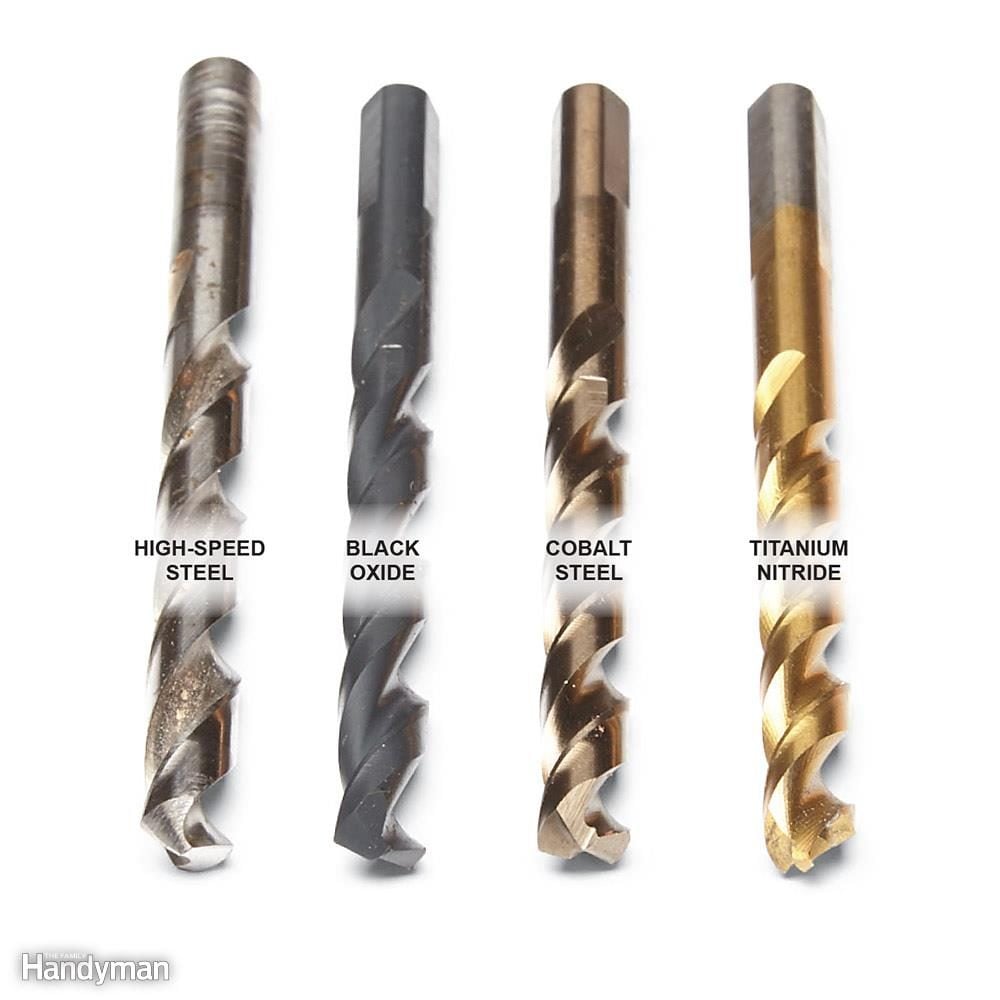
No Fancy Drill Bits for Metal Required
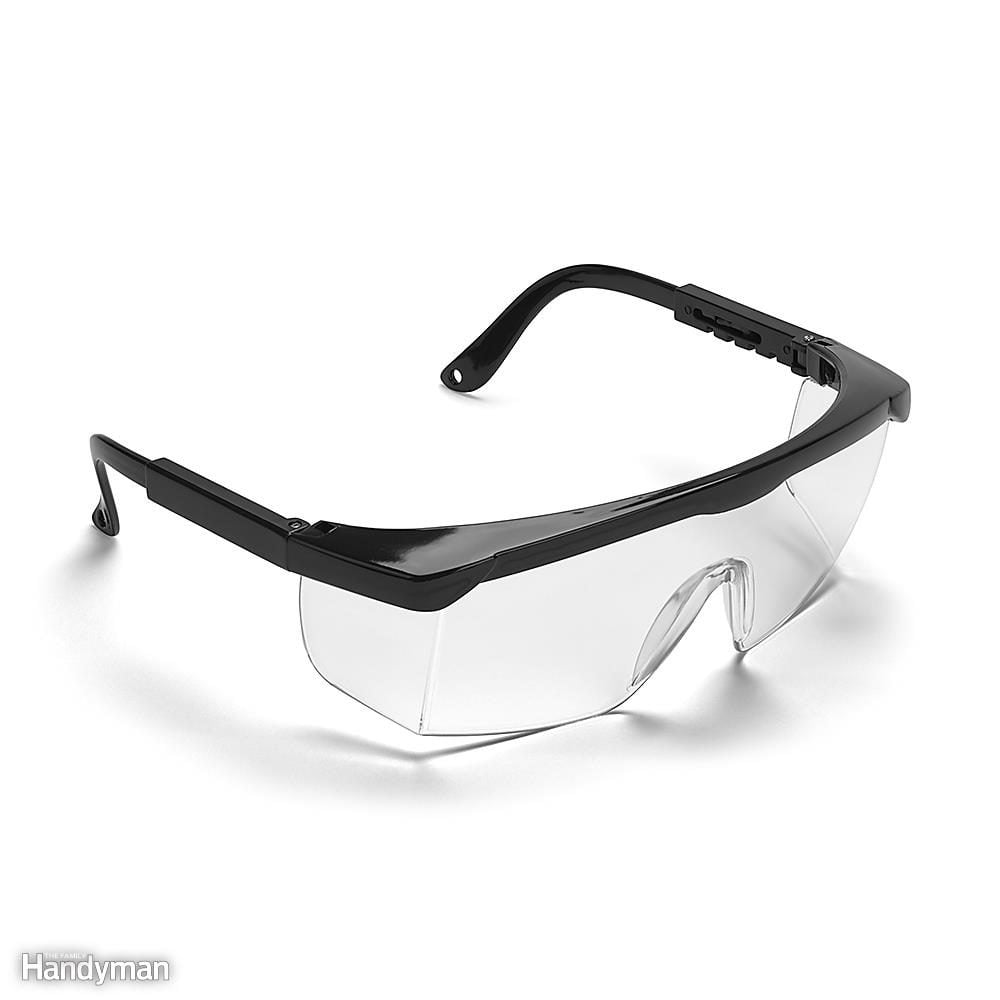
Protect Your Eyes
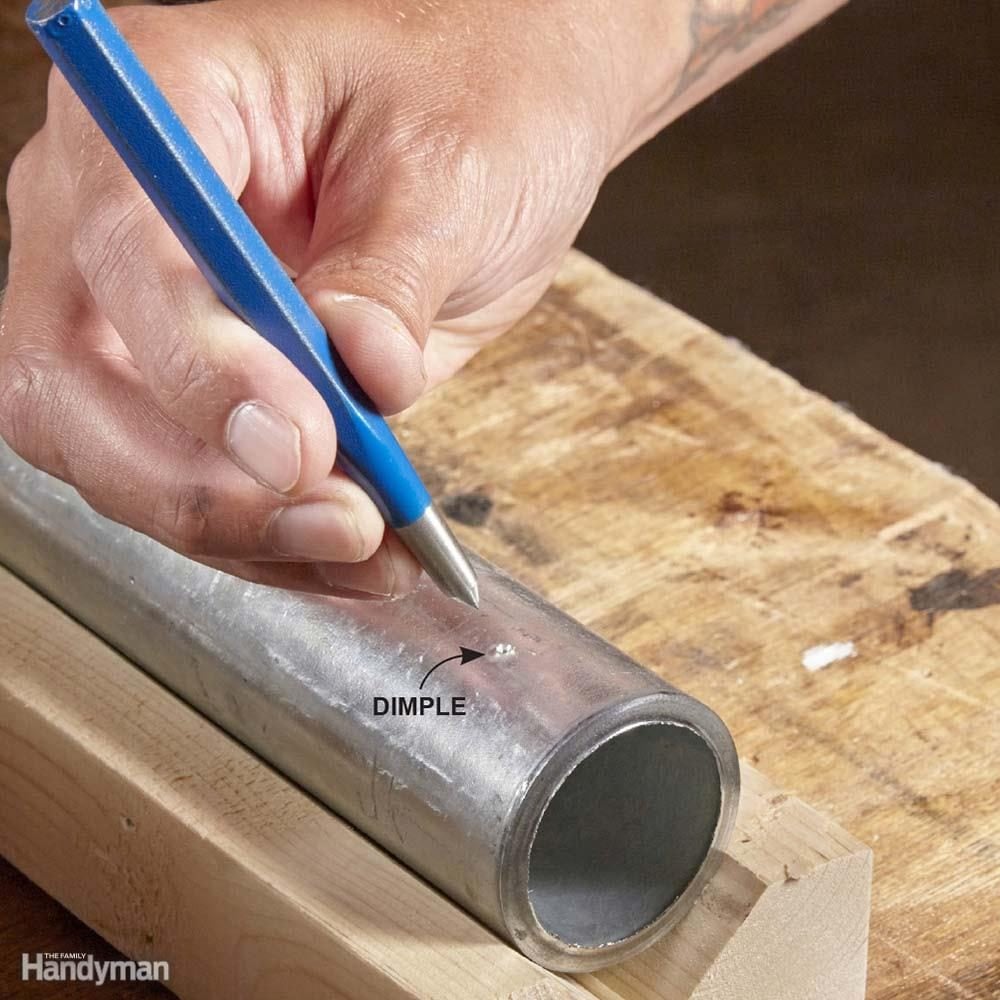
Make a Dimple
Plus, Here’s How to How Drill a Hole in Tile
Mounting towel bars, shower doors and other bathroom accessories often require drilling holes in tile.
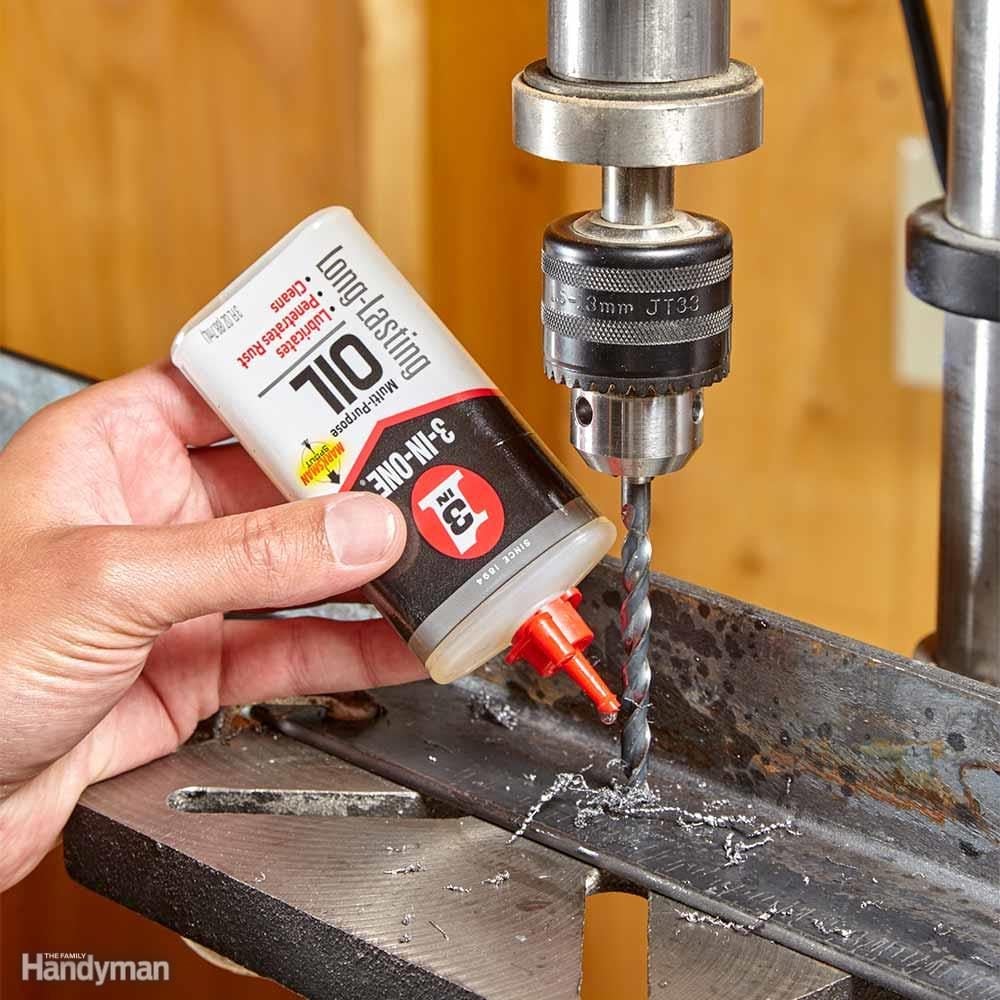
Lubricated Bits Last Longer
For drilling holes in steel that's 1/8 in. or thicker, use cutting fluid or a multipurpose oil like 3-IN-ONE. Lubricating the bit reduces friction and heat buildup, which makes drilling easier and your bits last longer. For easier-to-drill metals like aluminum, brass or cast iron, lubrication isn't usually necessary.

Clamps Prevent Stitches

Start with a Small Hole
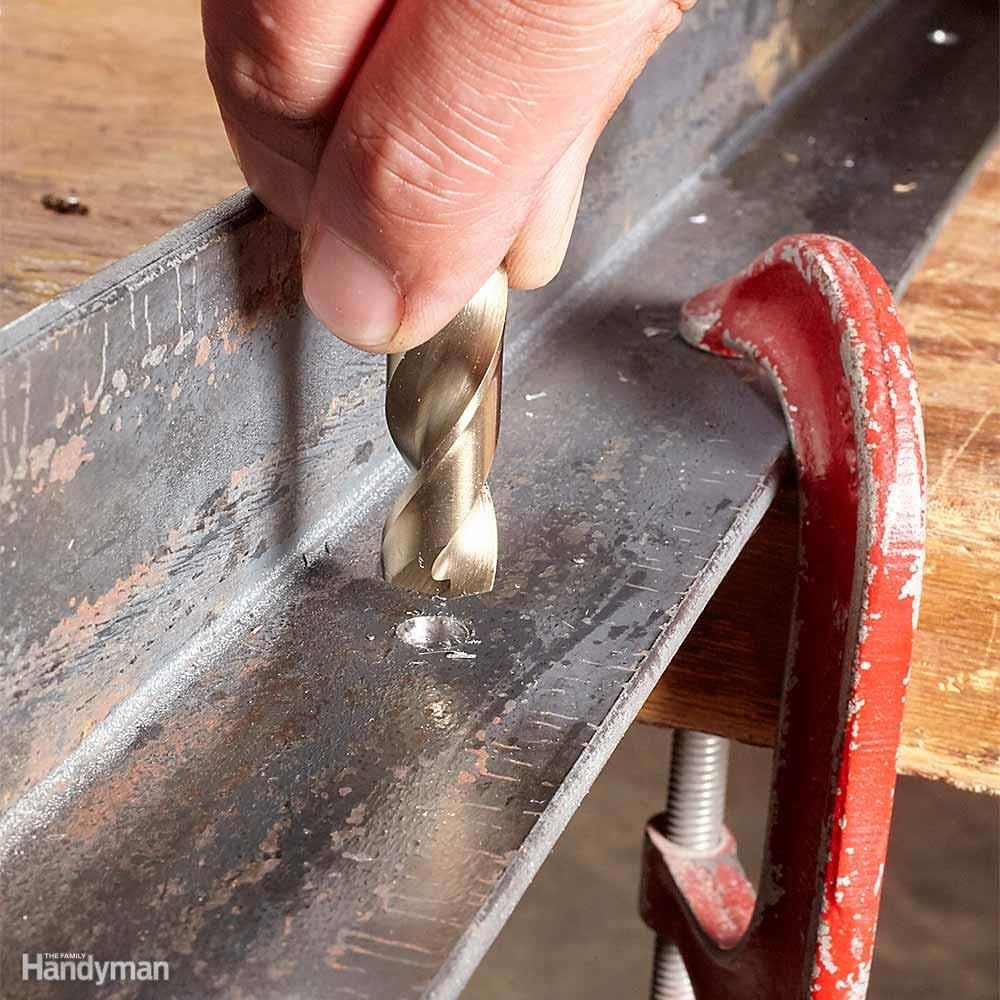
Deburr the Hole
After drilling a hole in metal, it's a good idea to remove any sharp edges or burrs left behind. You can buy fancy deburring tools to smooth sharp edges, but before spending money on one, try this trick: Take a twist bit slightly larger in diameter than the hole you just drilled, and gently hand-twist it over the top of the hole. This will smooth out the edge of the hole and grind away any burrs.
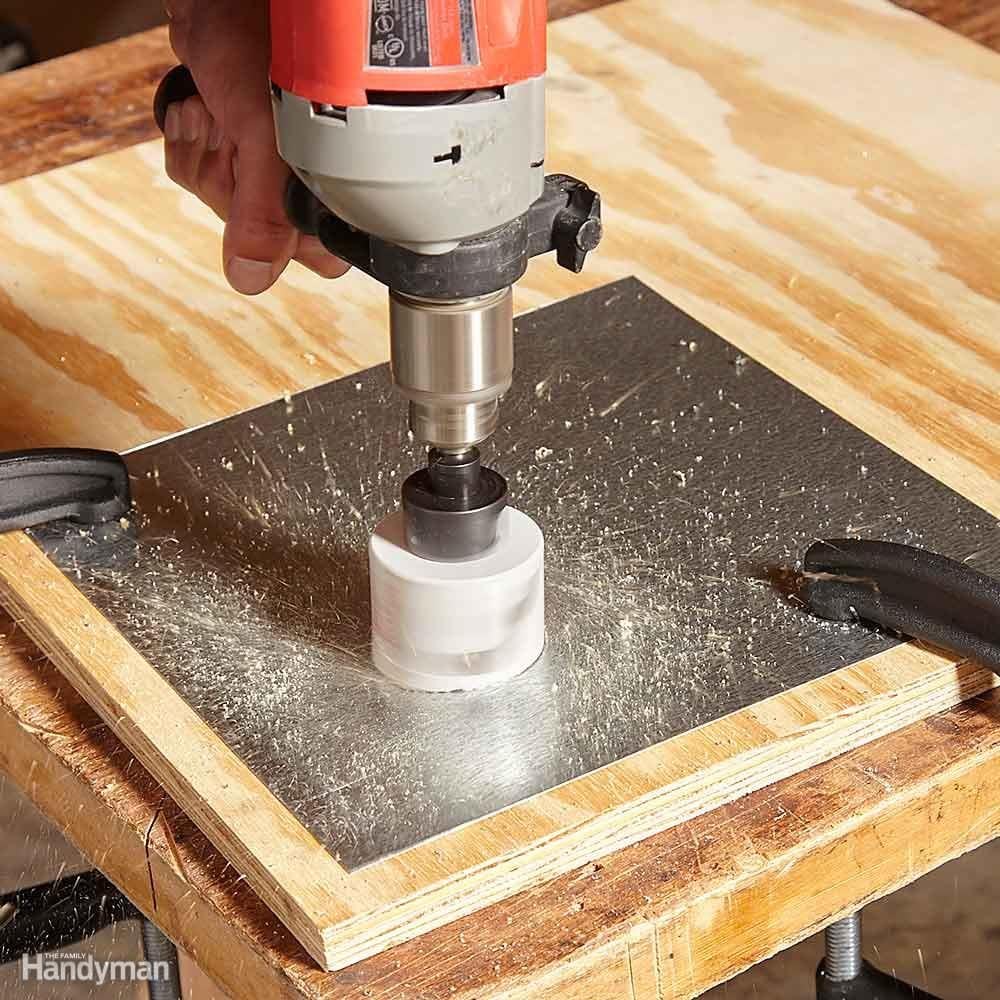
Hole Saws Cut Bigger Holes
For large holes, a hole saw gets the job done cleanly and quickly. Like twist bits, hole saws chuck right into your drill and will cut through thin-gauge sheet metals like aluminum and steel. Use a scrap of plywood as a backer for the hole saw's pilot bit and to protect your work surface.
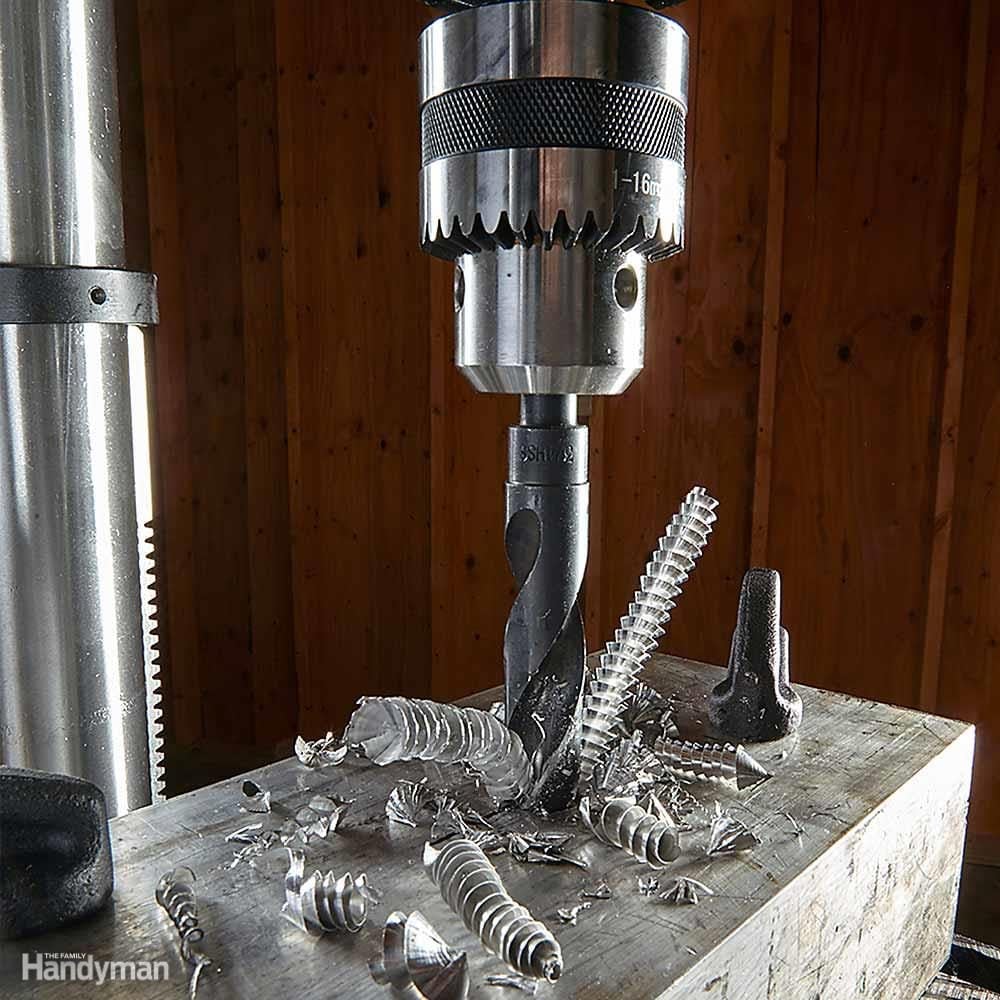
Drill at a Slow Speed
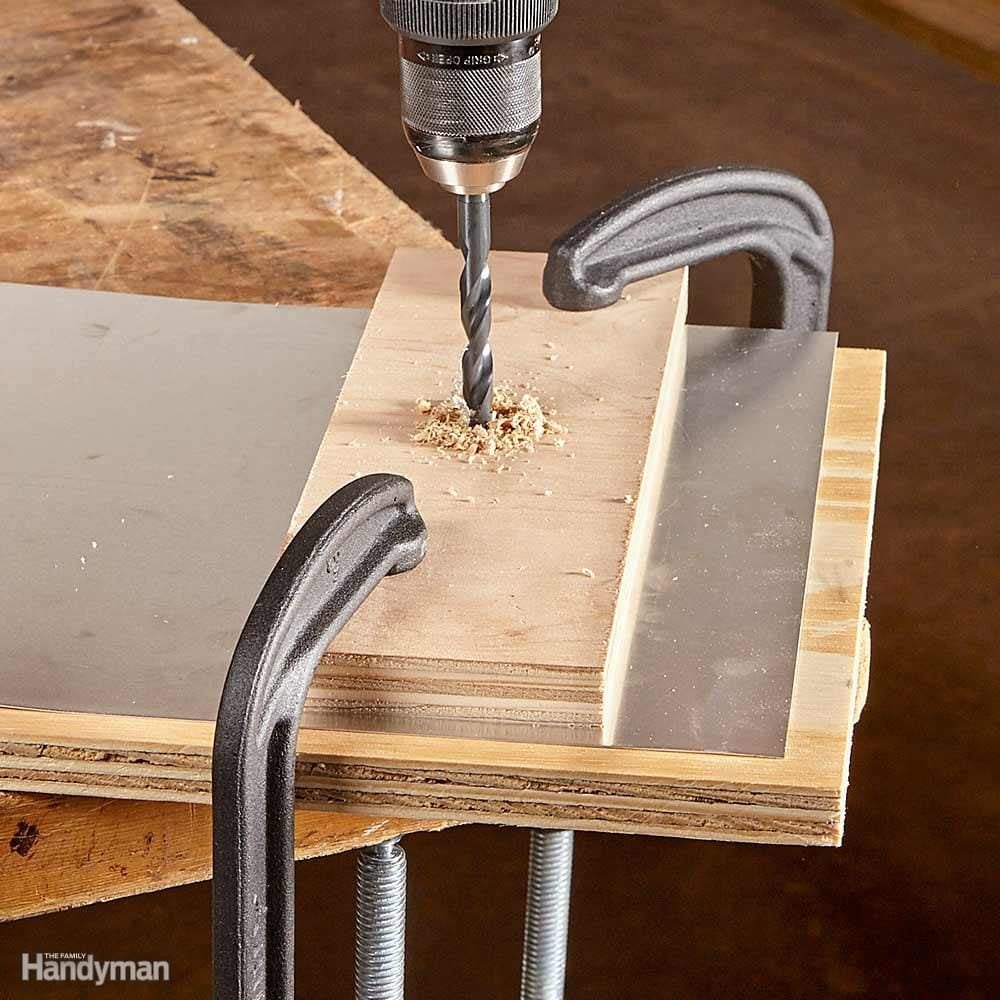
Make a Sandwich
For clean, precise holes in thin sheet metal, make a wood sandwich. Simply sandwich the sheet metal between two pieces of wood and clamp everything down on a table or workbench. The wooden 'bread' layers of the sandwich keep the sheet metal flat and prevent the drill bit from wandering as it bores through the sheet metal.
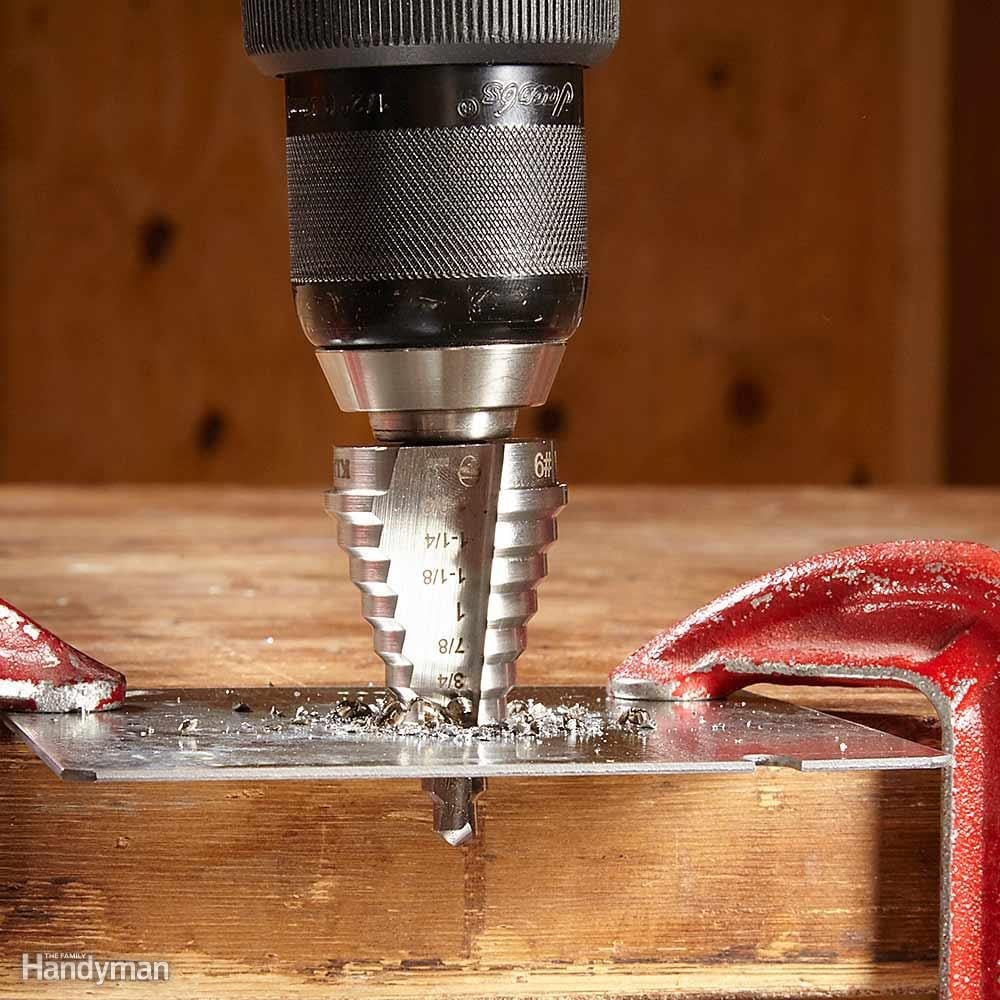
Try a Step Bit
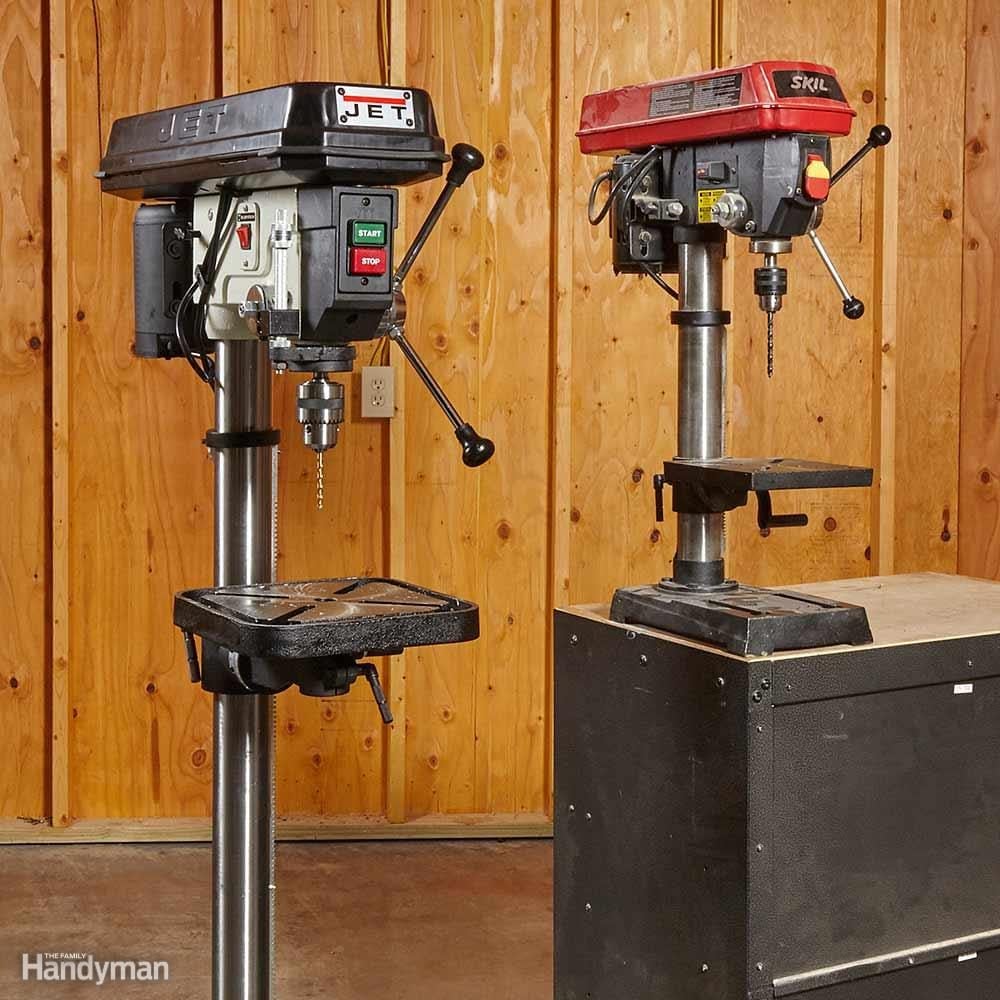
Step Up to a Drill Press
While it's fairly easy to drill most holes in metal using nothing more than a handheld drill, you'll almost always get greater accuracy and better results using a drill press. Most drill presses are actually built with metalworking in mind. Pulling down on the handle causes the bit to plunge straight down into a workpiece and make a very precise hole.
Drill presses also come with beefy cast-iron tables with tilt and height adjustments, and allow a variety of clamping options. Speed changes are as easy as opening the lid and moving a rubber belt from one pulley to another. The most expensive drill presses are floor-standing models, but you can buy a decent benchtop unit for about $100.